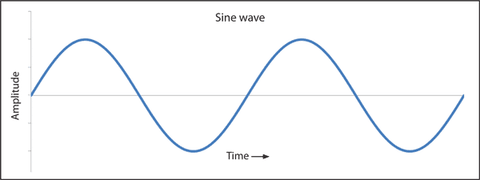Modern metal detectors use a variety of advanced technologies to help you detect deeper, identify targets more accurately, and hunt confidently in any soil.
This guide breaks down each major technology in clear, beginner-friendly language while providing enough technical detail for experienced detectorists.
Where helpful, we’ve included internal link suggestions so you can explore detectors, coils, and accessories in our catalog:
Multi-Frequency Metal Detection (Simultaneous & Selectable)
Multi-frequency technology is used by modern detectors such as the Minelab Equinox, Manticore, XP DEUS II, Nokta Legend, and more. It allows the detector to transmit and analyze several frequencies at the same time or switch between individual frequencies depending on the machine.
Two types exist:
- Simultaneous Multi-Frequency – sends many frequencies at once (best for saltwater, minerals, and ID accuracy)
- Selectable Single Frequency – you choose which frequency to run (useful for optimizing sensitivity)
Benefits of multi-frequency include:
- Stable operation in wet salt sand
- Highly accurate target ID
- Stronger depth on both low and high conductivity metals
- Better small gold sensitivity than traditional VLF detectors
To compare modern multi-frequency machines, explore: Minelab Detectors, XP Detectors, Nokta Detectors and Garrett Detectors
Minelab VFLEX Technology
VFLEX is Minelab’s enhanced VLF system using digitally controlled, coil-specific frequency transmission. It improves stability, accuracy, and sensitivity while allowing users to switch frequencies simply by changing coils.

All-Digital Coil Communication
Every VFLEX coil contains a microcontroller that communicates with the detector’s control box on startup. This ensures perfectly matched frequency generation, greatly reducing distortion and increasing Target ID stability.
Perfect Sine Wave Transmission
VFLEX produces an audio-grade sine wave signal for maximum clarity and depth. Cleaner transmission means less ground noise and more accurate responses.
In-Coil Signal Booster
VFLEX amplifies faint signals inside the coil before they travel up the cable. This helps identify tiny or deep targets even in electrically noisy environments.
Selectable Frequencies (3 kHz, 7.5 kHz, 18.75 kHz)
- 3 kHz – Deep, large silver, copper, and relics
- 7.5 kHz – All-around general detecting
- 18.75 kHz – Great for jewelry, fine chains, and small gold
Shop compatible coils: Minelab Coils
Broad Band Spectrum (BBS)
BBS is Minelab’s simultaneous multi-frequency system (1.5–25.5 kHz). It provides excellent depth, sensitivity, and stability on all target types—especially in tough environments like wet salt beaches and heavy mineralization.
- Detects small and large targets in a single swing
- Reduces false signals from minerals
- Improves target separation and accuracy
Explore machines using BBS: Minelab Treasure Detectors
In-Coil Signal Booster

RCB amplifies signals at the coil, preventing cable loss and improving sensitivity, especially on deep or faint targets.
Accurate Multi-Channel Signal Conversion
BBS uses multiple signal channels to separate ground noise from real targets. This results in highly accurate IDs even in harsh conditions.
Full Band Spectrum (FBS)
FBS transmits a much wider frequency range (1.5–100 kHz), giving detectors even more target information. Known for extreme depth and accuracy, FBS excels in mineralized ground and saltwater.
- High sensitivity to tiny and deep targets
- Automatic ground compensation
- High-resolution Target ID
- Smartfind™ 2D discrimination
See detectors with FBS: Minelab E-TRAC & Explorer Series
Automatic Sensitivity & Ground Compensation
FBS continually adjusts to ground mineralization. This keeps the detector stable and maximizes depth without requiring manual re-balancing.
Multi-Channel Conversion for Superior ID
FBS uses fast Sigma-Delta conversion to separate ground noise from target signals. This enhances accuracy, especially for deep silver and high-conductive finds.
Multi Period Sensing (MPS)
MPS is Minelab’s Pulse Induction technology, designed for extreme mineralization and gold hunting. It samples received signals during different pulse windows, separating gold signals from heavy mineralization.

Explore PI Machines: Minelab GPX Series All Pulse Induction Detectors
Dual Voltage Technology (DVT)
DVT uses two voltage levels per pulse to push more energy into the ground. This improves depth and reduces ground noise.

Smart Electronic Timing Alignment (SETA)
SETA reduces environmental noise by aligning detector timings with current magnetic conditions, maximizing sensitivity to deep and small gold.

Continuous Sine Wave (VLF)
VLF is the most common metal detection technology used in entry-level to mid-range detectors. It transmits a single continuous frequency and benefits from improved digital processing in modern machines.

Shop VLF Detectors: All Detectors
Selectable Three-Frequency (3F)
3F machines allow you to switch between 6.4, 20, and 60 kHz depending on your target size and terrain.
- 6.4 kHz – Excellent for deep, large gold
- 20 kHz – Balanced for general gold detecting
- 60 kHz – Extremely sensitive to tiny gold
ACCU-TRAK Ground Tracking
Automatically adjusts ground balance as mineralization changes so you maintain maximum depth and stability.
Pre-Set Ground Balance
Useful for mild soils like parks and playgrounds, though less effective in minerals or salt.
Discrimination Systems
Metal detectors use several methods to identify targets and reduce junk:
- Variable Discrimination – reject signals below a chosen conductivity
- Notch Discrimination – accept or reject specific conductivity windows
- 2D Target ID (Smartfind™) – separates ferrous and conductive properties
To compare detectors by features, view: Metal Detector Comparison Chart
E-TRAC Smartfind

Explorer SE Pro Smartfind

Search Coil Size
Coil size dramatically affects performance:
- Large coils – deeper detection, less sensitivity to tiny targets
- Small coils – improved separation, maneuverability, and small-target sensitivity
Browse coils by brand: Minelab Coils, XP Coils, Coiltek Coils
Search Coil Shapes
- Round – depth and stability
- Elliptical – great maneuverability
- Open-web – lighter, better for water
Search Coil Configurations
Concentric Coil

Excellent pinpointing but less stable in high mineralization.
Double-D Coil

Stable, deep, and excellent in mineralized or salt environments.
Monoloop Coil

Extreme sensitivity and depth on PI detectors; requires careful GB in minerals.












